Done a few searches to date on this subject and can’t quite find the answer I’m looking for…
My questions are, in context with the consequent user information:
-
If I make a model using a series of subtools how do I then make the mesh one single solid mesh in Z-Brush?
-
If I use Mesh Insert to create a single tool from a series of sub tools, what is the best method for retopologising the resultant mesh to form a new tool?
Those are my main concerns at the moment. I’ll give you some background on what I’ve been doing… it should make the questions meaning more relevant….
I’m using z-brush 3.1 to create items such as shoes, sports equipment, fully clothed figures etc. Normally I will create these using a series of sub tools. When happy I use the insert mesh function to create one single sub tool.
However, when I export to Rhino V4 using the .obj export option, I find that the MESH created is joined, but all the subtools are in fact still present (each sub tool is solid, but remain as individual parts).
see pictures:
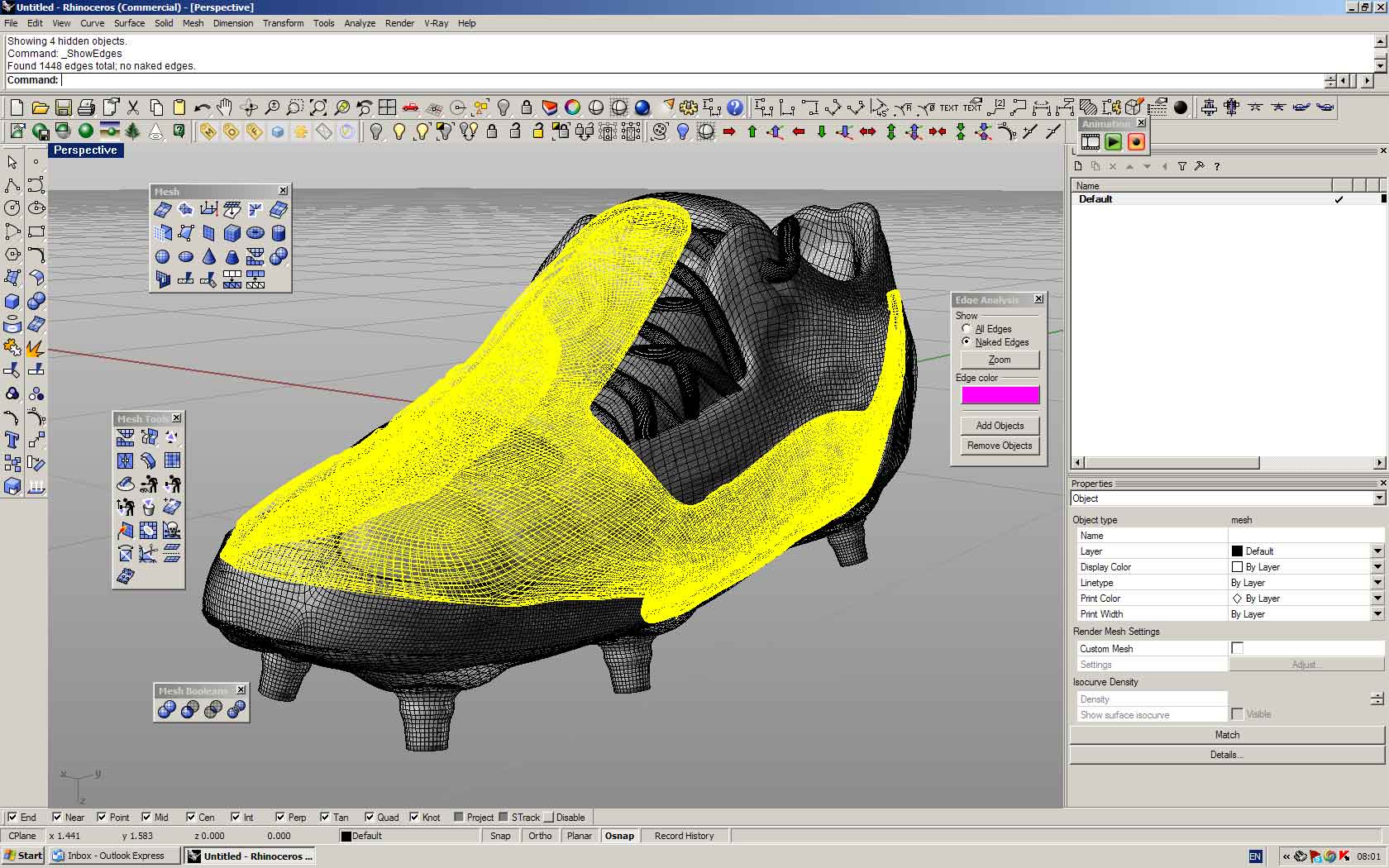
However, as you can also see, I’ve developed some undesirable wrinkles in my surface. These aren’t present on the original model. I’ve already resolved some of these errors using the smooth brush. However the smooth brush is pretty useless around the studs of the boot as it unrealistically deforms them.
Anyone got any ideas how to achieve what I’m looking for? Am I on the right track or down a dark ally on this one? Please help and thanks for reading.
Hurricks
PS I’ve only been using Z-Brush since Nov 08, so please forgive me if I’ve missing the blatantly obvious on this one!
Attachments
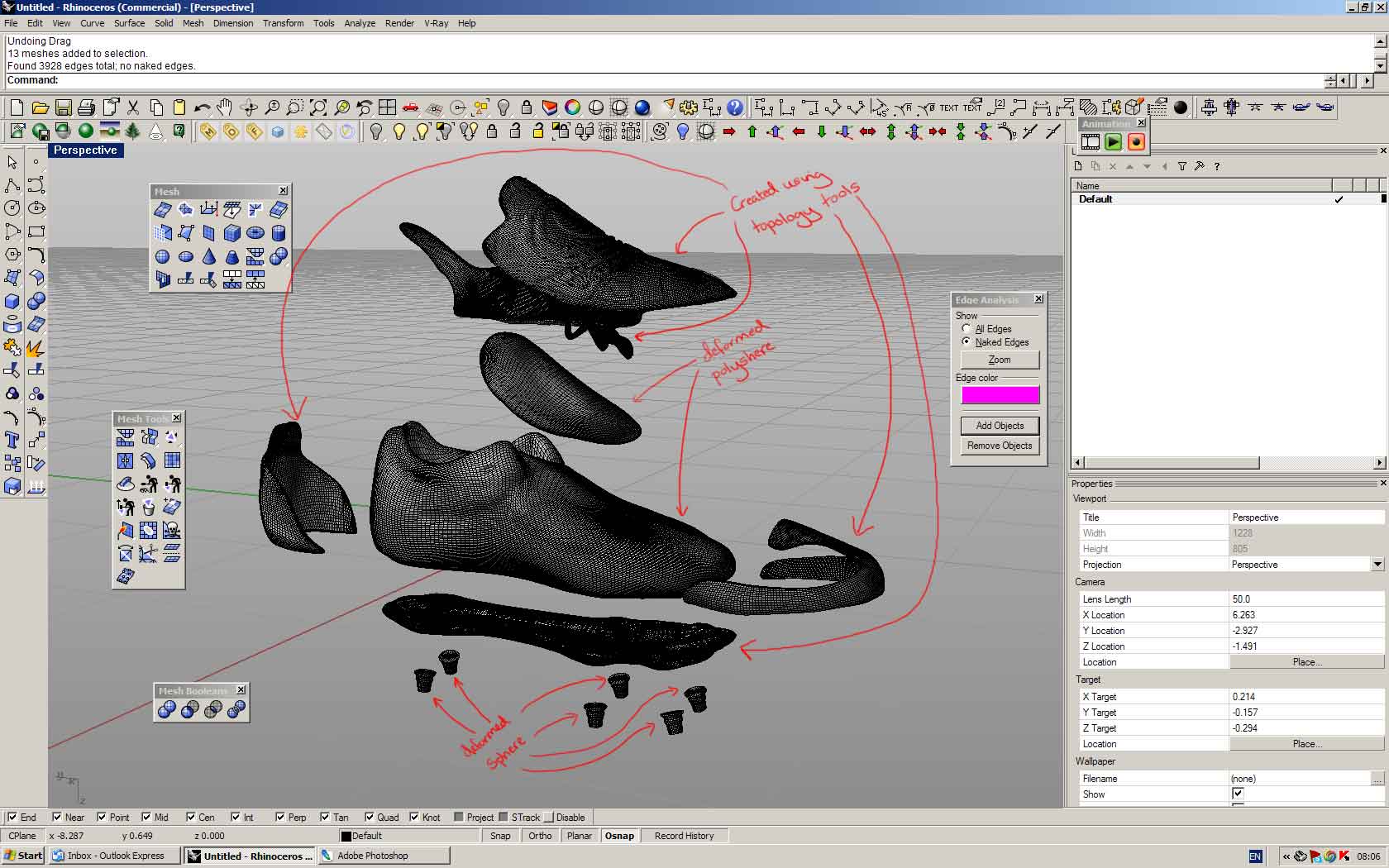
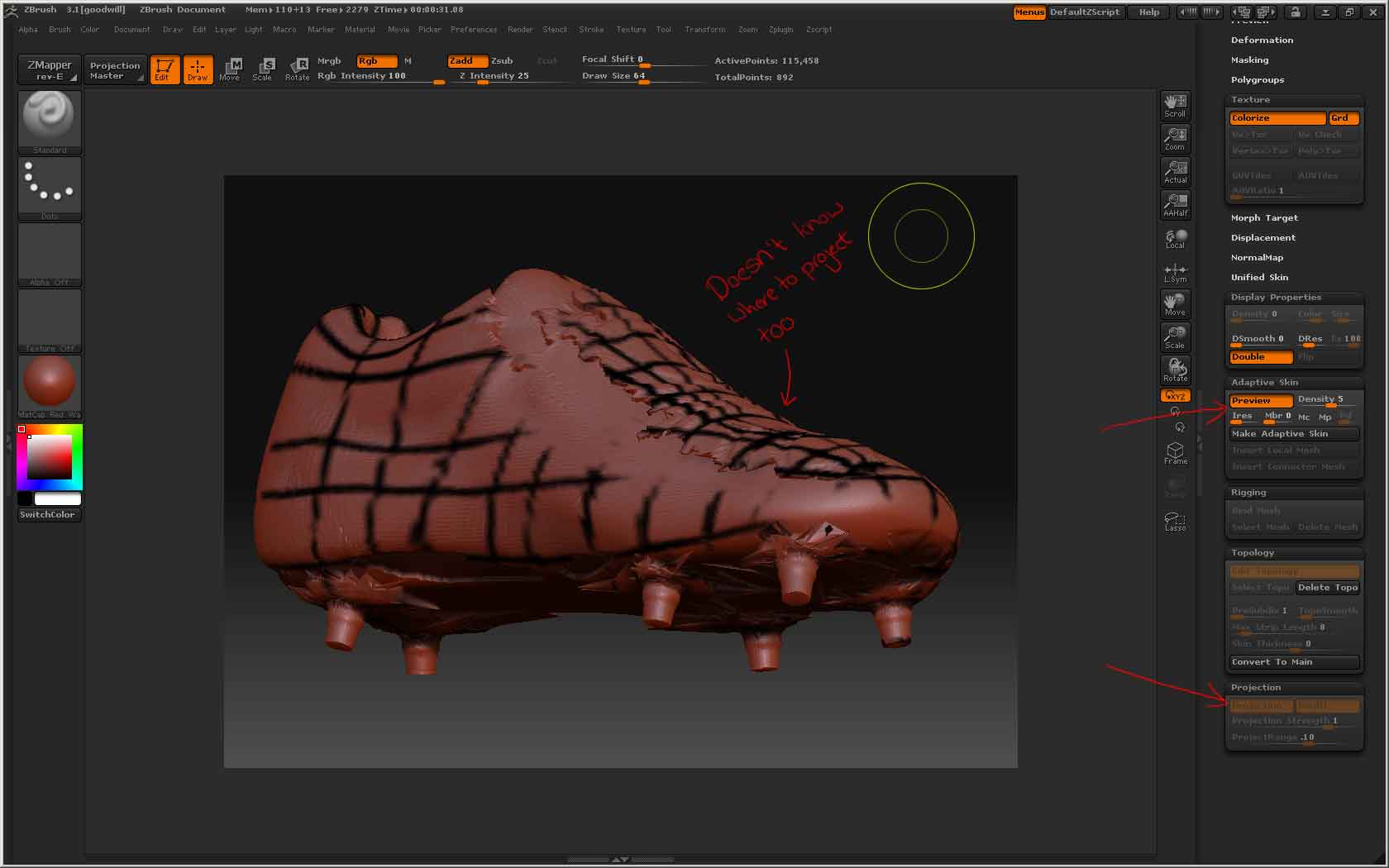
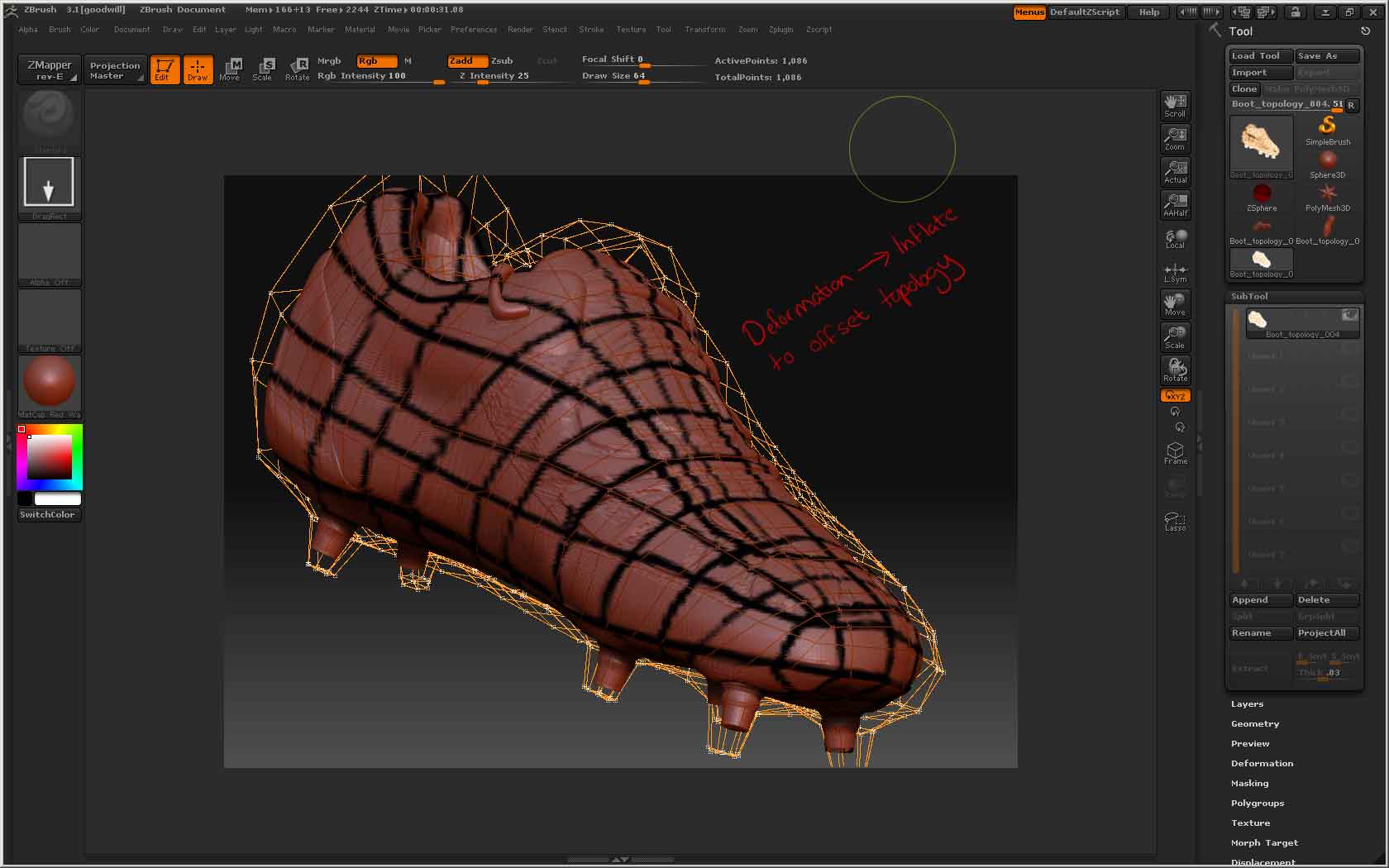
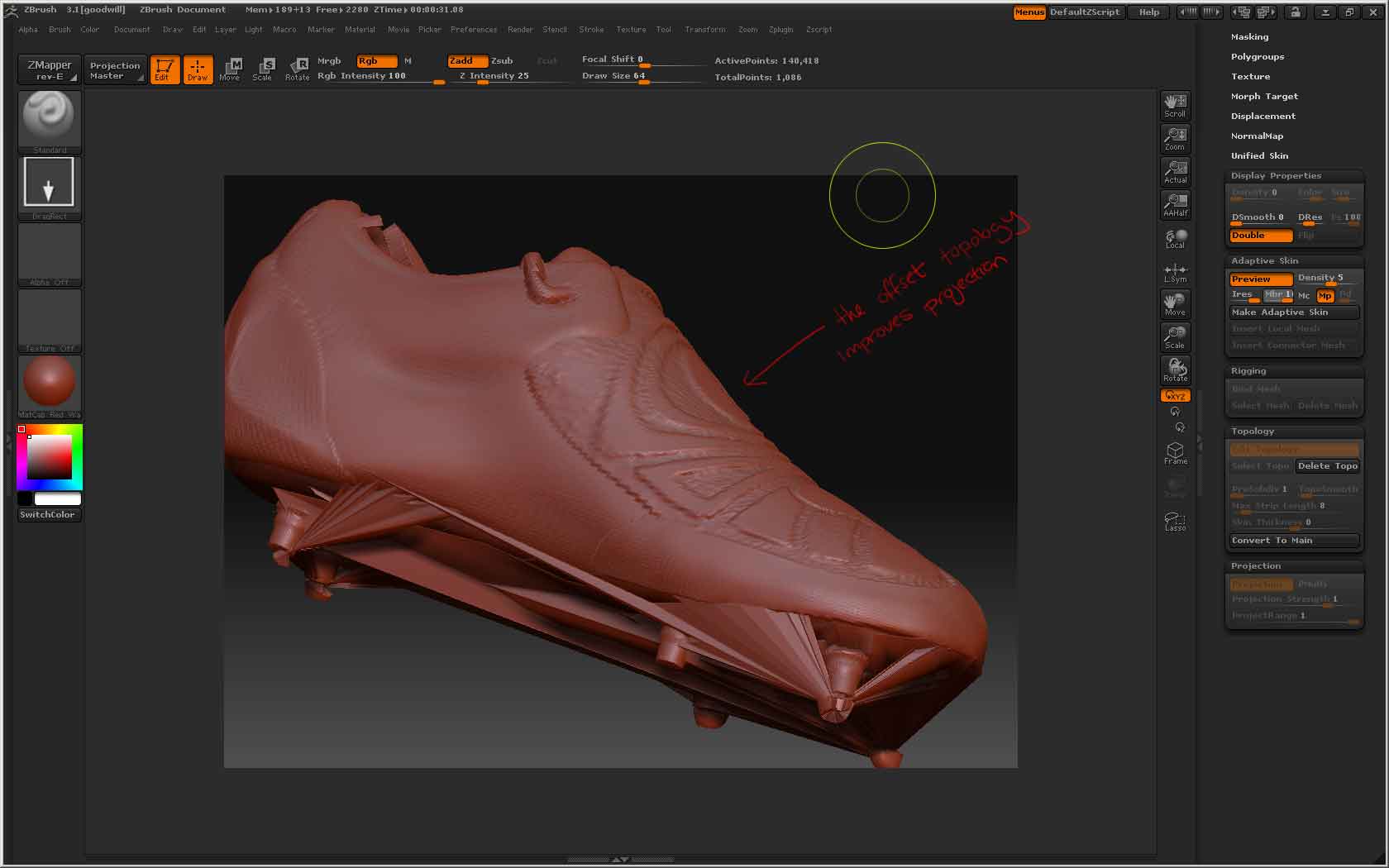
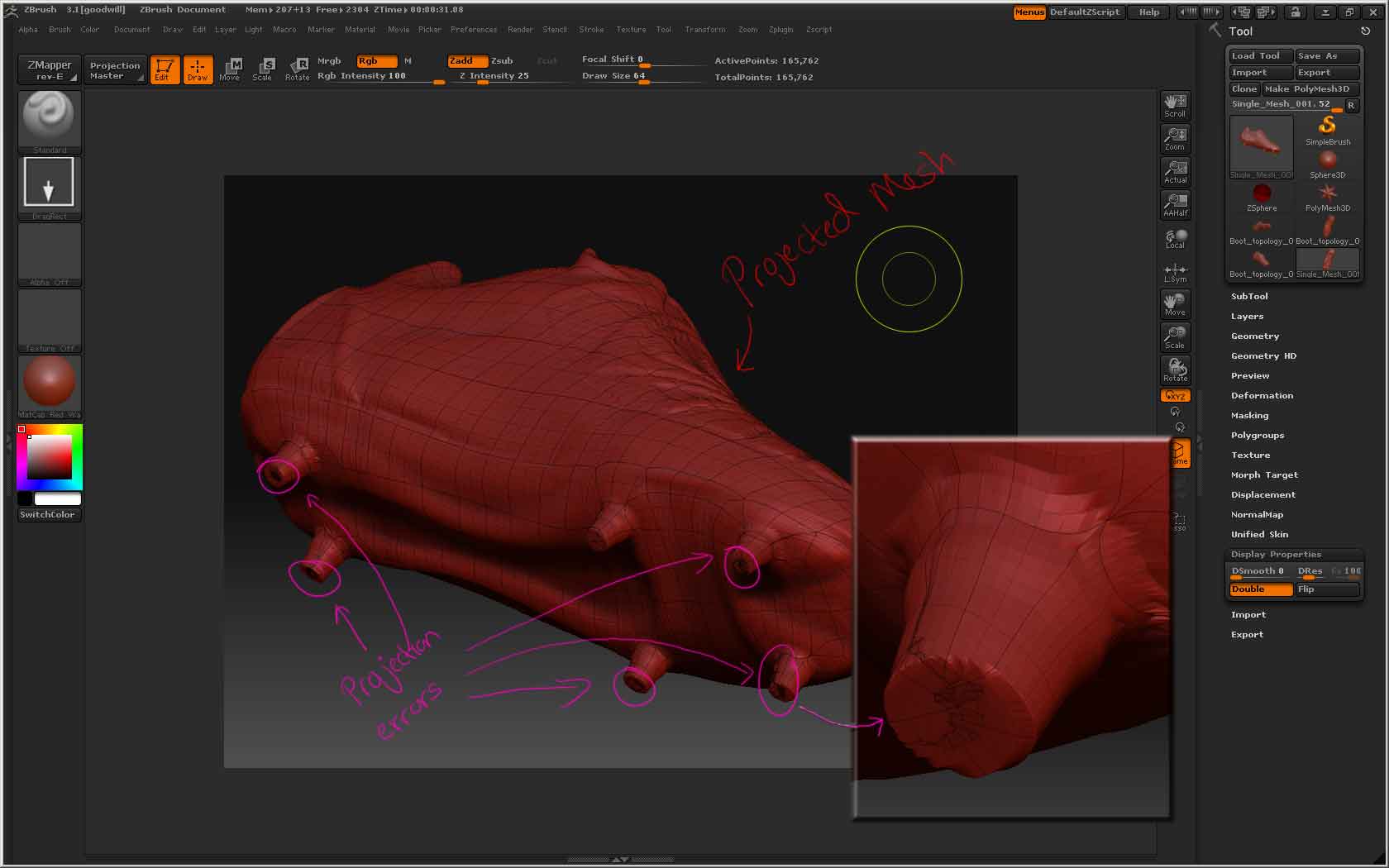
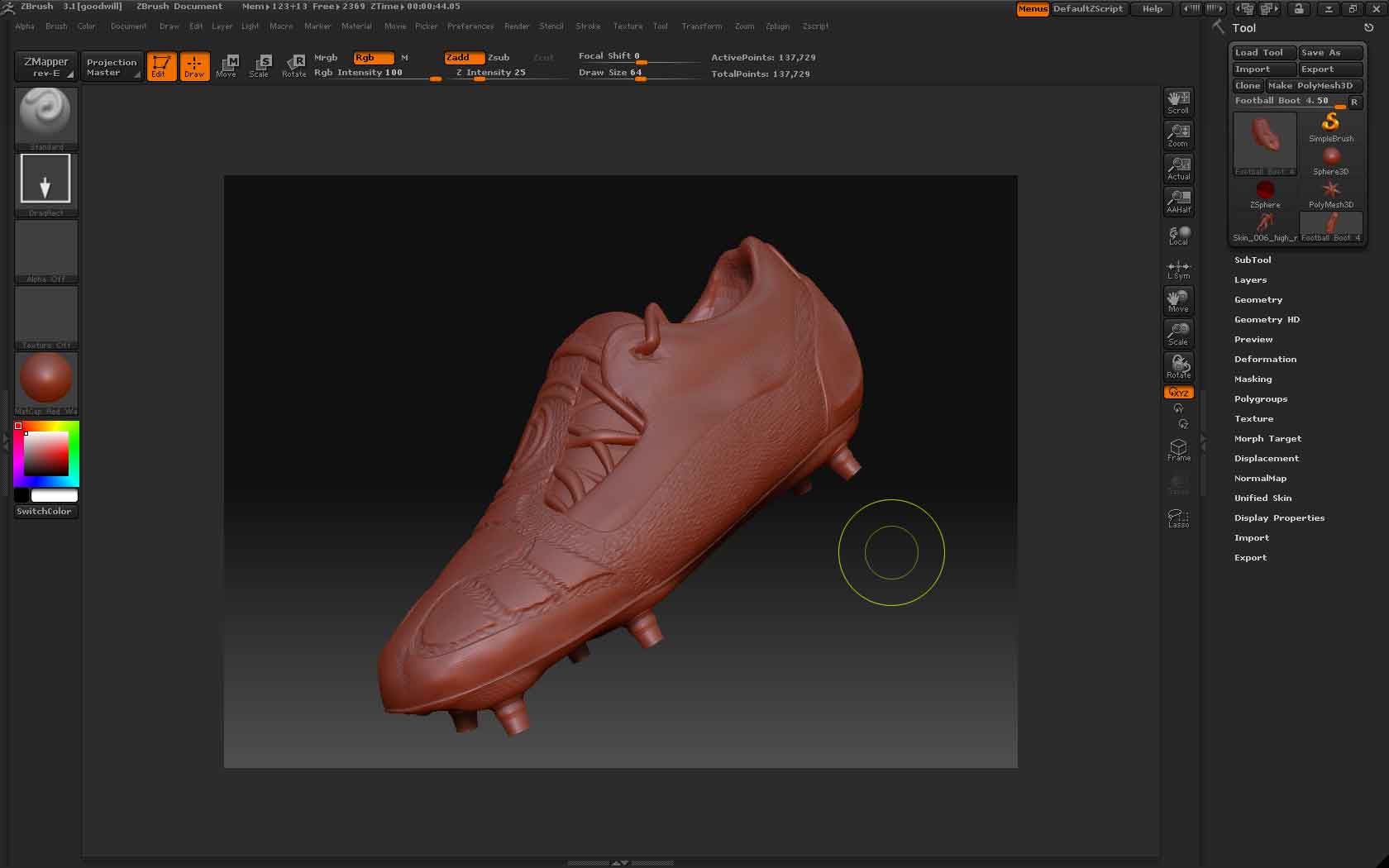
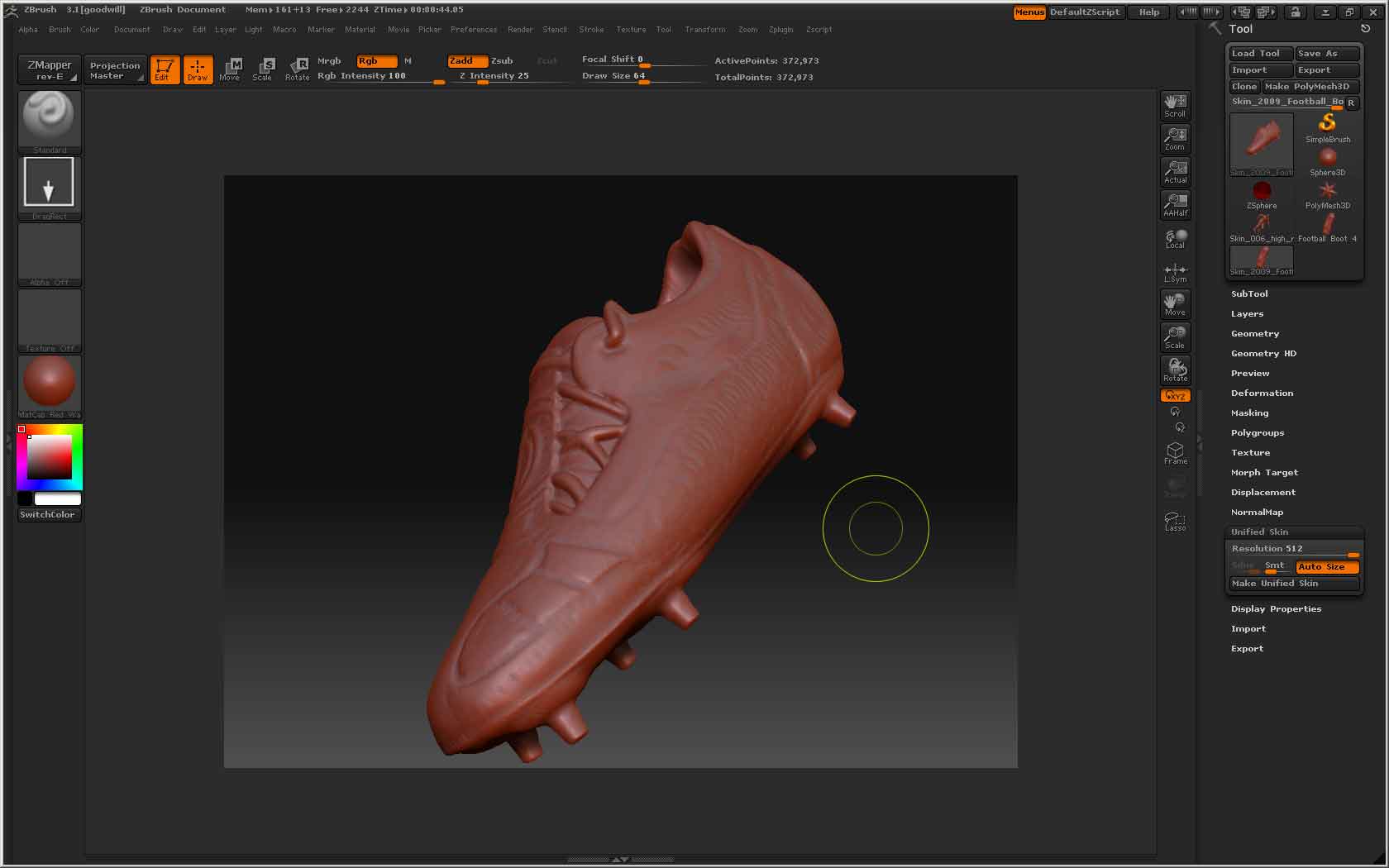
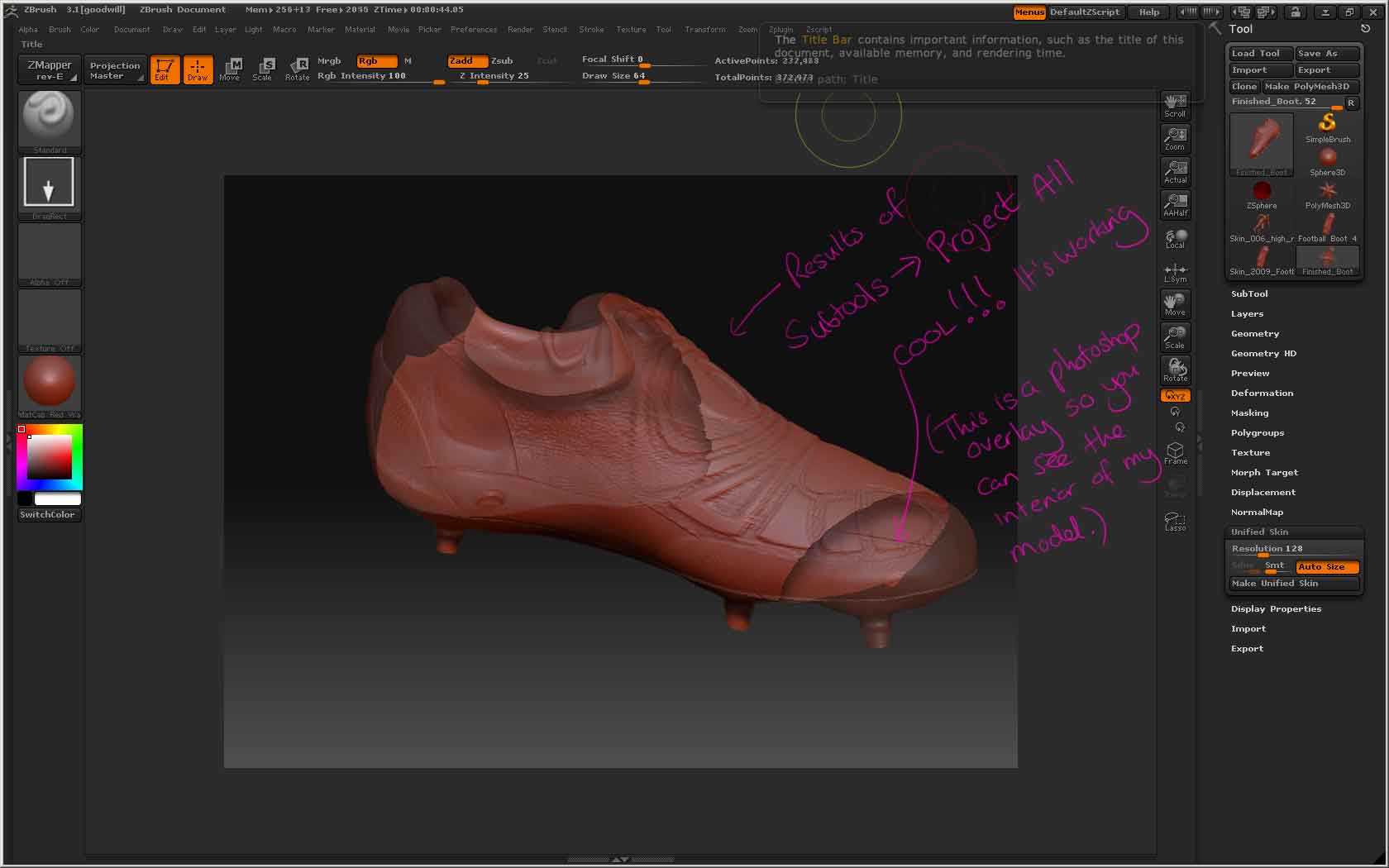
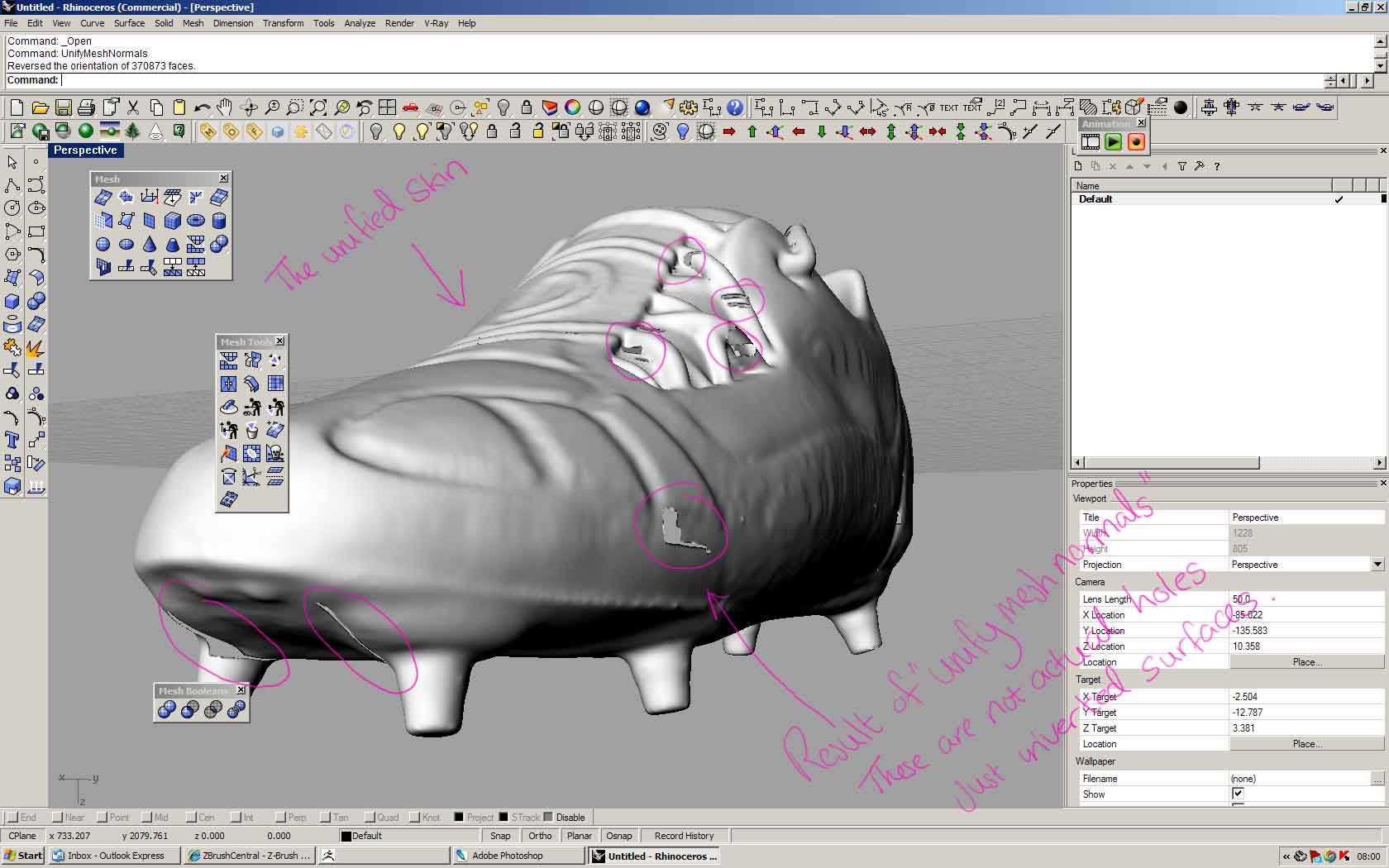
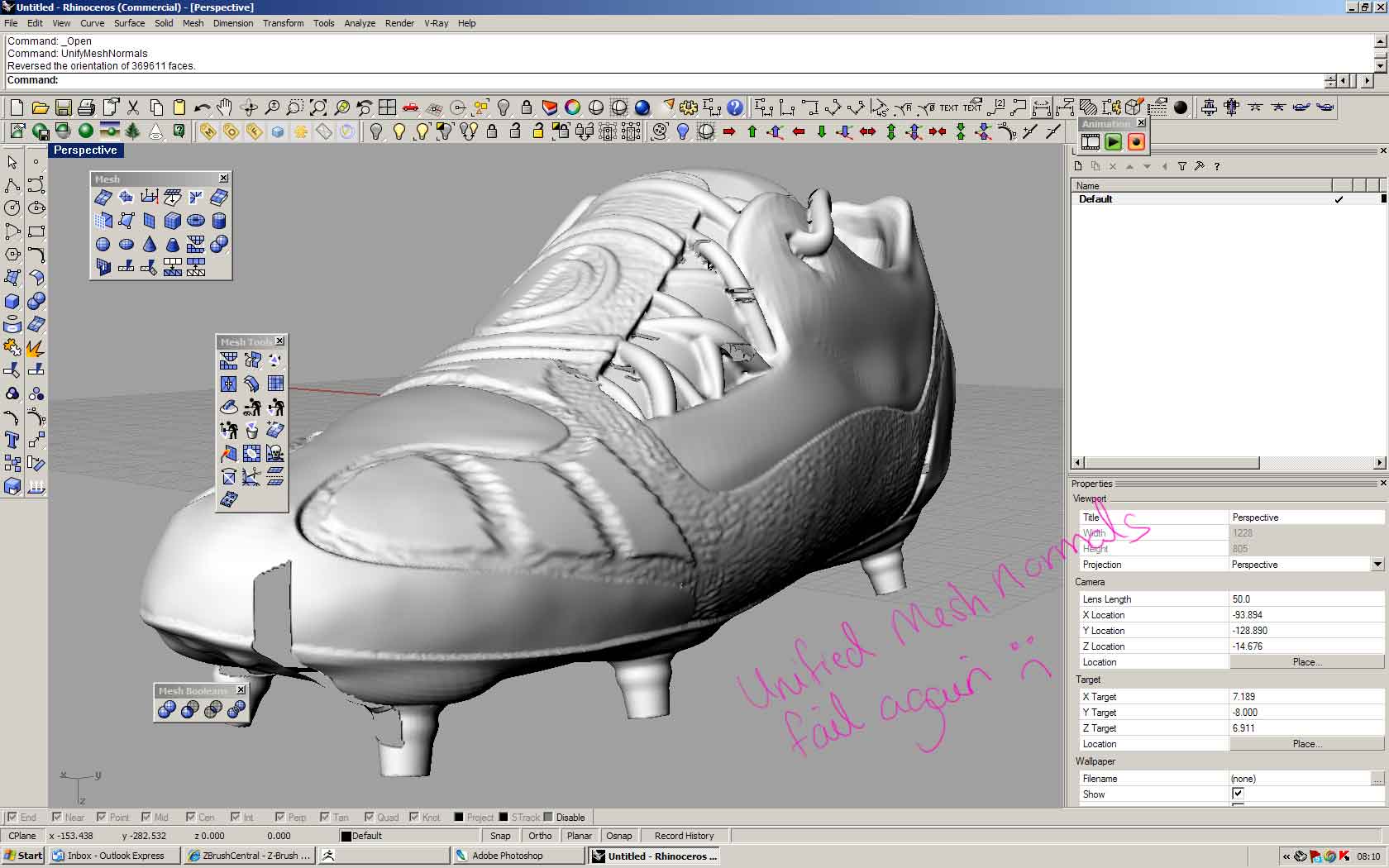
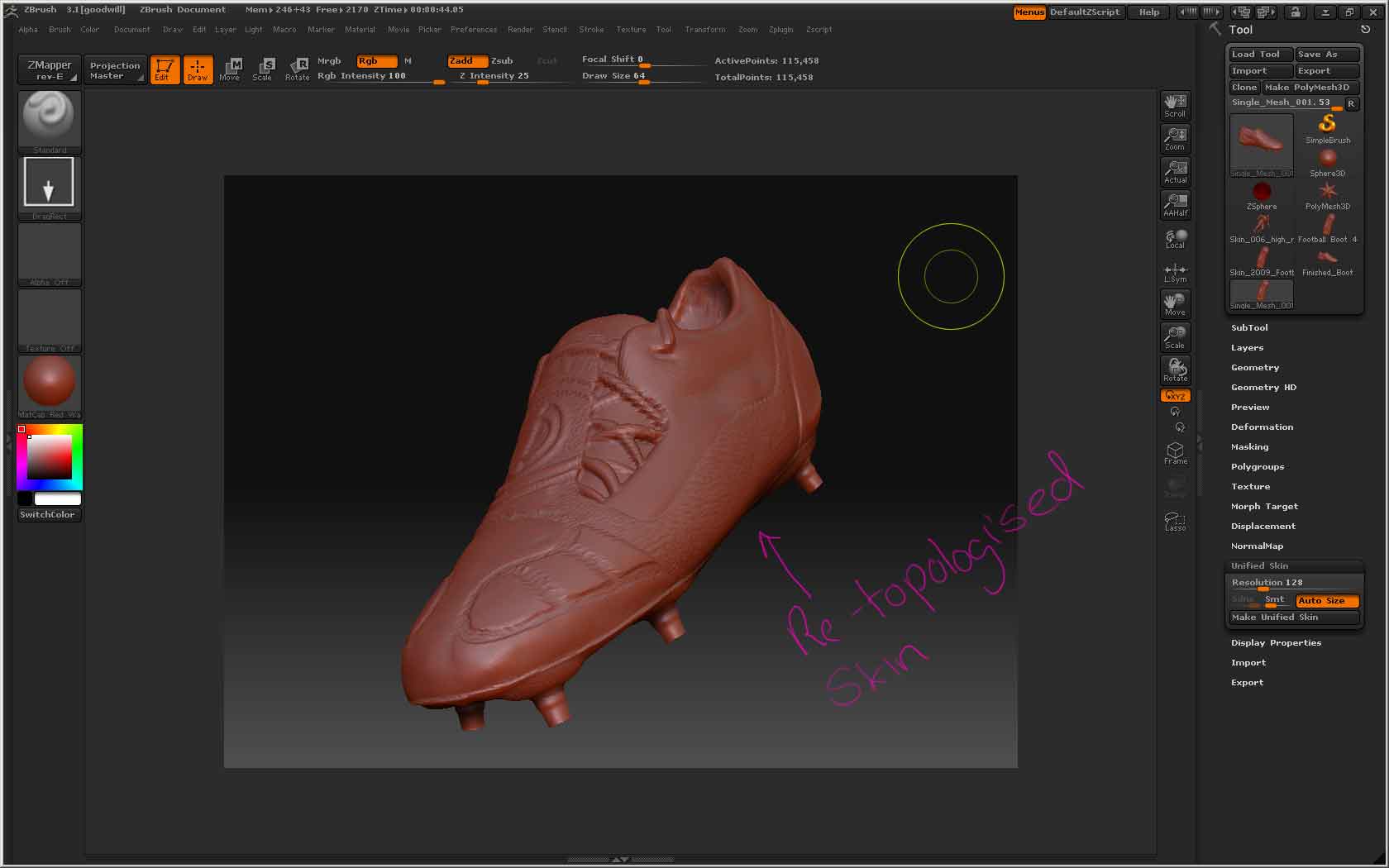
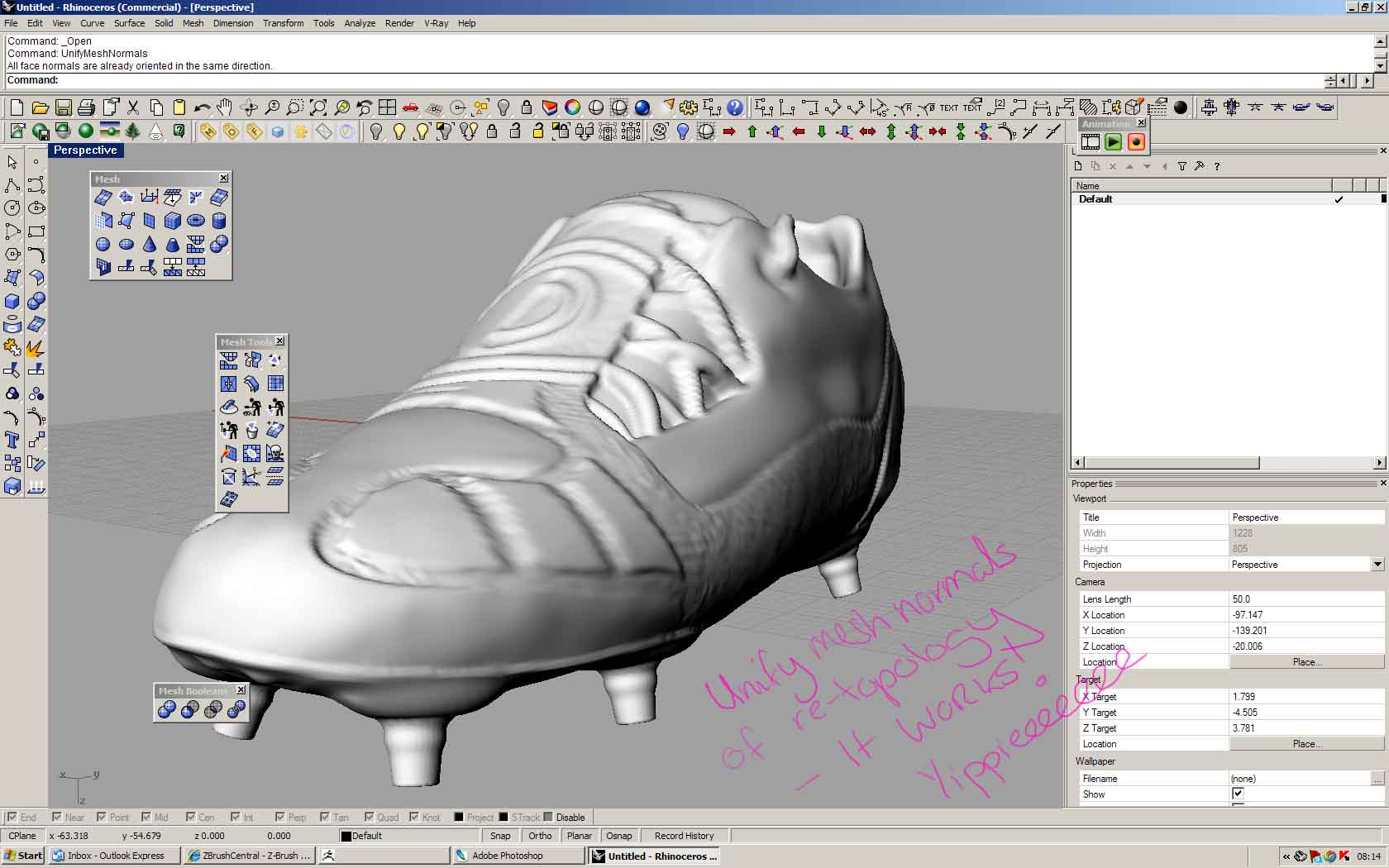
 I need to do some more reading on the subject, as I don’t think I totally understand the process at the mo. So not sure what I need to ask you specifically…
I need to do some more reading on the subject, as I don’t think I totally understand the process at the mo. So not sure what I need to ask you specifically…